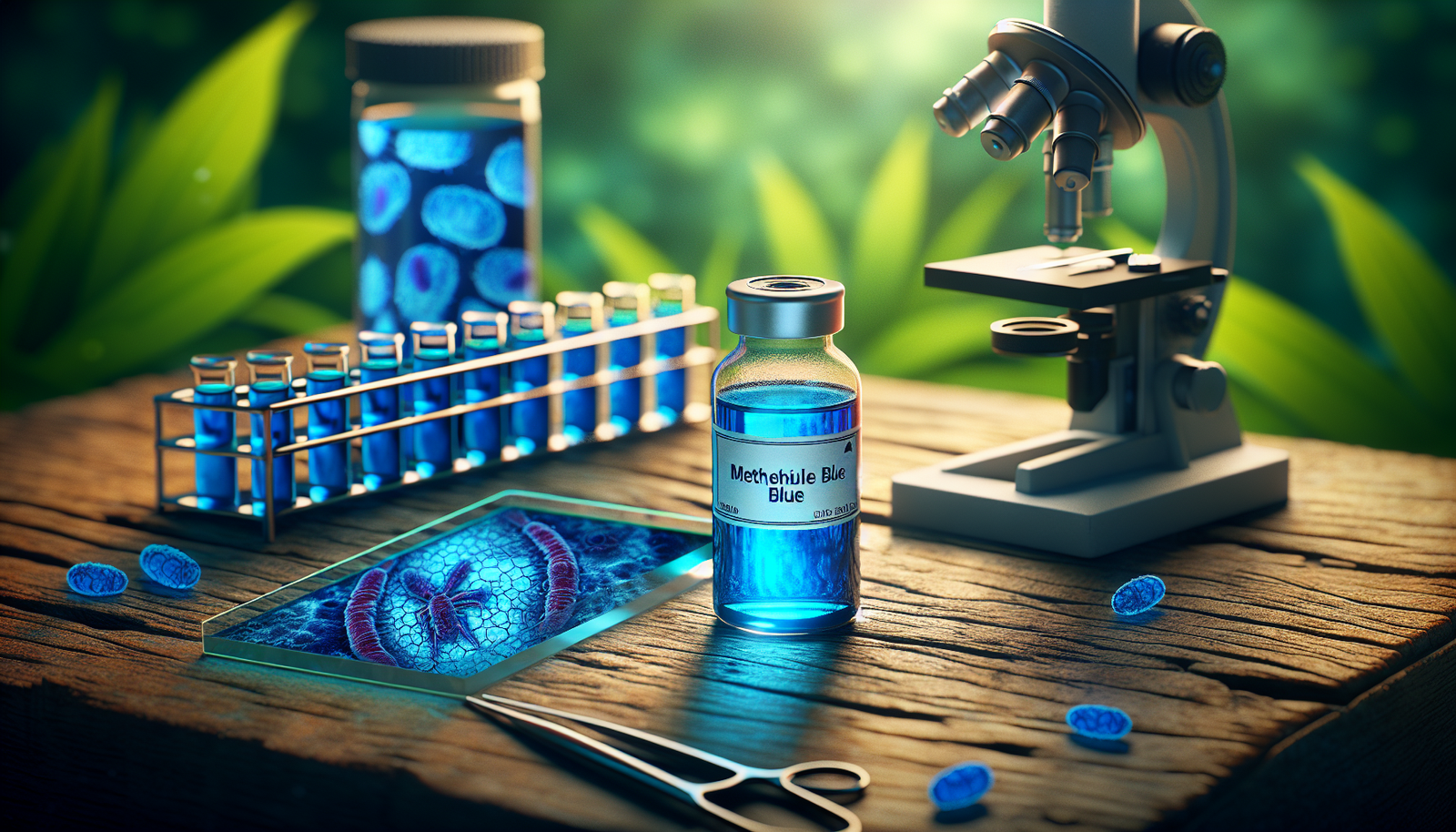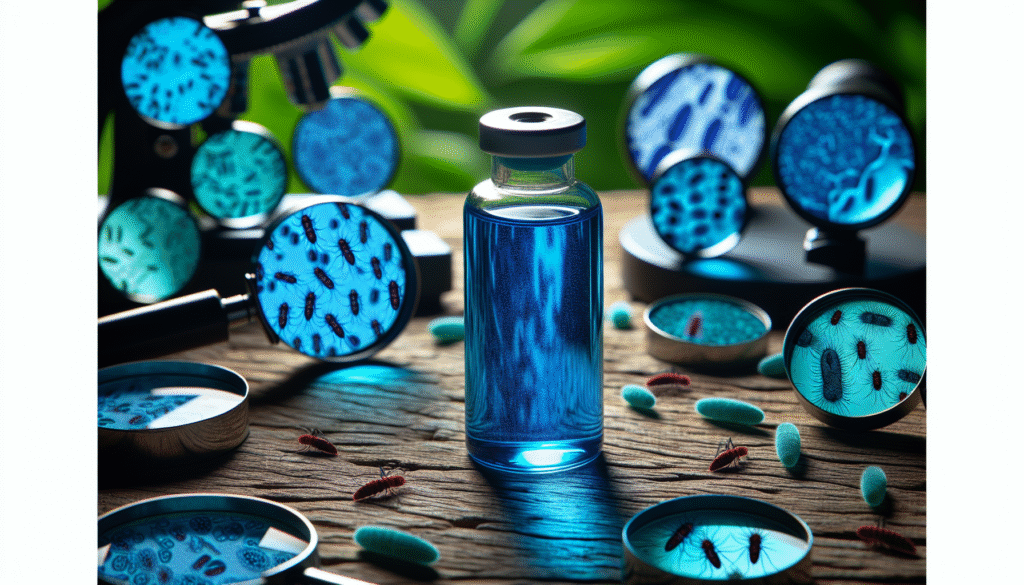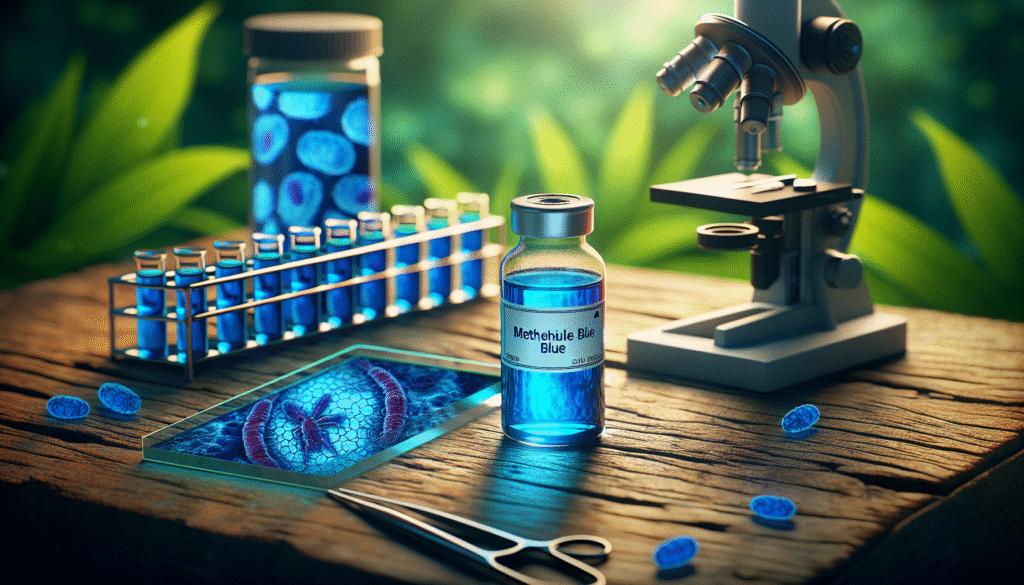
Have you ever considered the potential of alternative treatments in addressing one of the world’s most devastating diseases? Malaria continues to claim hundreds of thousands of lives each year, pushing researchers and healthcare professionals to seek new therapeutic options. Among the possible candidates, Methylene Blue has gained attention for its historical and emerging role in treating malaria.

Understanding Methylene Blue
Methylene Blue is a synthetic compound initially developed as a dye in the late 19th century. It serves varied purposes, from a biological stain in laboratory settings to a potential treatment for certain medical conditions, including malaria. Its use in treating malaria is not entirely novel; it has roots dating back to the early 20th century.
Mechanism of Action
The mechanisms by which Methylene Blue impacts malaria-causing parasites are multifaceted. It primarily works by interfering with the electron transport chain of the Plasmodium species, which are responsible for malaria. By halting cellular respiration and inhibiting the production of ATP, Methylene Blue effectively restricts the growth and replication of these parasites within the human body.
Notably, Methylene Blue may also possess some anti-inflammatory and immunomodulatory properties, providing a multifactorial avenue for combating malaria in more severe cases.
Historical Context and Efficacy
Historical Use of Methylene Blue in Malaria Treatment
Historically, Methylene Blue was utilized in the early 1900s for treating malaria. It fell out of favor with the advent of more effective antimalarial drugs, particularly quinine derivatives, but has seen renewed interest in recent years due to rising resistance to commonly used antimalarials.
Clinical Efficacy
The effectiveness of Methylene Blue as an antimalarial agent has been the subject of numerous studies. Research indicates that Methylene Blue exhibits promising results against both Plasmodium falciparum and Plasmodium vivax, the two most prevalent species responsible for human malaria.
In clinical trials, Methylene Blue has shown efficacy rates comparable to traditional treatments. However, its clinical application is often weighed against its pharmacokinetics, side effects, and tolerability in diverse patient populations.
Comparative Studies
When comparing Methylene Blue to existing treatments, specific studies have proven vital. For instance, one randomized clinical trial indicated that Methylene Blue, when administered alongside artemisinin derivatives, led to improved therapeutic outcomes. This combination therapy exploits the synergistic effects between Methylene Blue and artemisinin, potentially reducing the risk of resistance development.
Current Research
New Insights
Recent findings continue to emphasize Methylene Blue’s role in combating resistant strains of malaria. Resistance to artemisinin has emerged in various regions, prompting the search for alternative strategies to manage malaria effectively.
Researchers are now looking at Methylene Blue’s potential role not only as a standalone treatment but also as an adjunct in combination therapies. The versatility of Methylene Blue’s mechanism could help defeat resistant strains and reduce treatment failure rates.
Challenges and Limitations
Despite its potential, Methylene Blue is not without limitations. The compound is associated with certain adverse effects. Common side effects include gastrointestinal disturbances, headache, and, in rare cases, hemolytic anemia, especially in individuals with G6PD deficiency.
Furthermore, its blue discoloration can pose cosmetic concerns, although this may be less significant in the context of treating a life-threatening illness. Additionally, Methylene Blue must be administered carefully under regulated conditions to avoid serious complications, particularly when introducing it in certain populations.
Dosage Guidelines
Conventional Dosing
Determining the appropriate dosage for Methylene Blue in treating malaria relies heavily on patient-specific factors, including age, body weight, and the severity of the disease.
Adults
In adults, Methylene Blue is typically administered at a dosage of 1-2 mg/kg body weight, usually delivered intravenously. This initial dose may be followed by a second dose after 6-8 hours if necessary.
Pediatric Patients
For children, careful consideration is taken to calculate the correct infant dosage. The dosage range for children often mirrors that of adults but is adjusted to accommodate lower body weight.
Factors Influencing Dosage
While Methylene Blue’s dosing may seem straightforward, there are several factors to consider:
- Age: Younger patients may metabolize the drug differently, necessitating adjusted dosages.
- Renal Function: Individuals with compromised renal function require more cautious dosing to prevent accumulation and toxicity.
- Concurrent Medications: The use of other medications may interact with Methylene Blue, requiring a tailored approach.

Safety Profile
Side Effects and Contraindications
While Methylene Blue holds promise, it is essential to understand its safety profile. Commonly reported side effects include:
- Nausea
- Vomiting
- Diarrhea
- Headache
- Dizziness
Moreover, Methylene Blue is contraindicated in individuals with G6PD deficiency, as it can exacerbate hemolytic reactions, leading to serious and potentially life-threatening complications.
Patient Monitoring
Ongoing monitoring during treatment with Methylene Blue is crucial. Healthcare professionals should observe patients for any adverse reactions, particularly those who exhibit risk factors for complications. Routine blood tests might be warranted in select cases to ensure safe treatment and address potential side effects promptly.
The Future of Methylene Blue in Malaria Treatment
Potential for Combination Therapies
The future of Methylene Blue in treating malaria hinges on its potential as part of combination therapies. With resistance to traditional treatments on the rise, the integration of Methylene Blue could bridge gaps in efficacy, providing a multi-faceted attack against the Plasmodium parasites.
Ongoing Research Initiatives
Continued research initiatives are essential to fully understand and harness Methylene Blue’s potential within the global fight against malaria. Current studies focusing on optimal dosing strategies, efficacy against resistant strains, and the integration of Methylene Blue into existing treatment protocols will be vital for shaping its future role.
Conclusion
As malaria remains a significant global health challenge, the exploration of alternative treatments, like Methylene Blue, is imperative. From understanding its historical context to recognizing potential dosages and safety concerns, a comprehensive grasp of Methylene Blue’s application in malaria treatment can provide a stepping stone towards effective strategies and improved outcomes for patients.
As ongoing research sheds light on the efficacy and optimal use of Methylene Blue, you can remain informed about potential advancements in malaria treatment that may redefine therapeutic frameworks. Understanding these developments could enable you to engage in more profound conversations regarding malaria management and public health.
The journey of Methylene Blue reflects the ever-evolving landscape of medicine, reminding you of the importance of ongoing exploration and adaptation in the quest to keep malaria at bay.